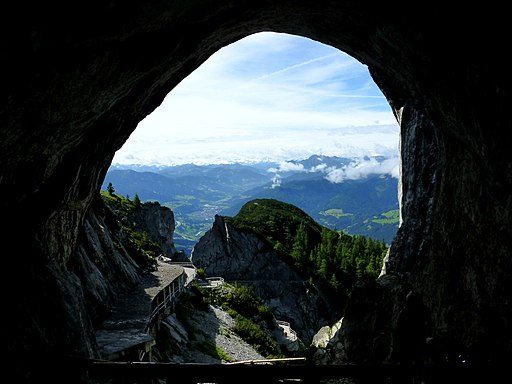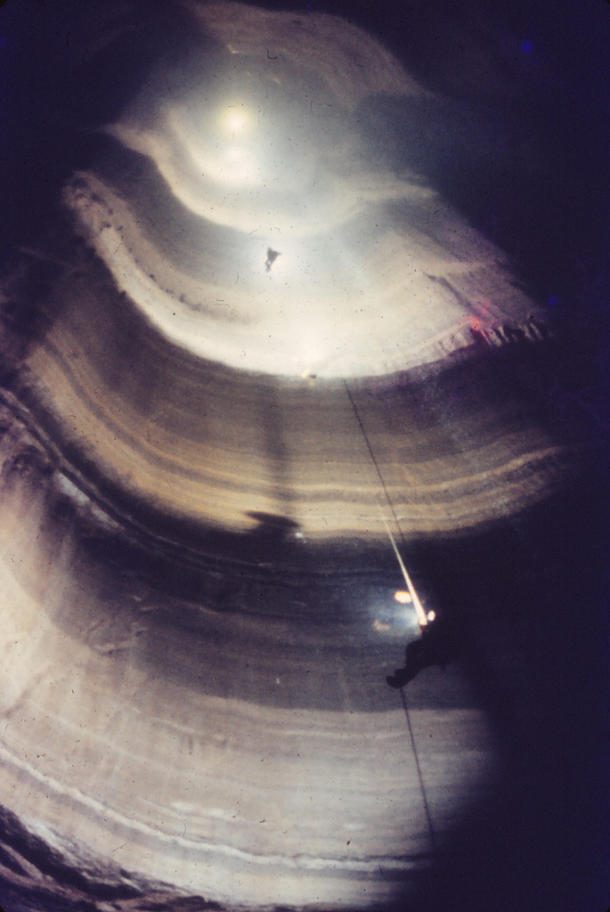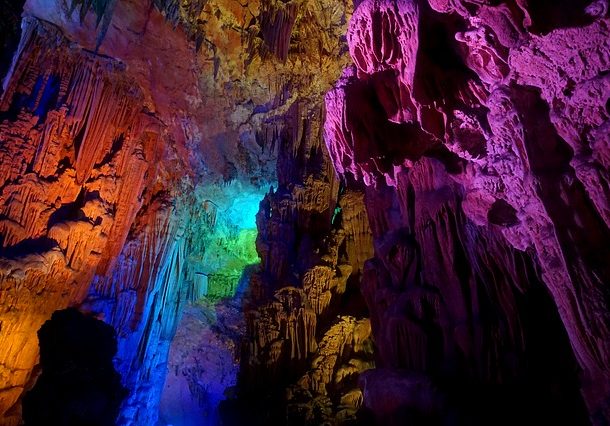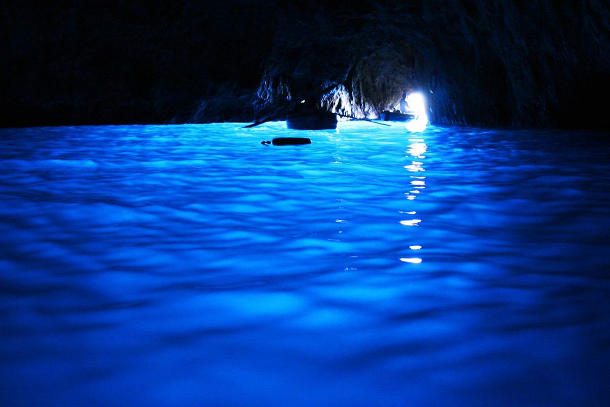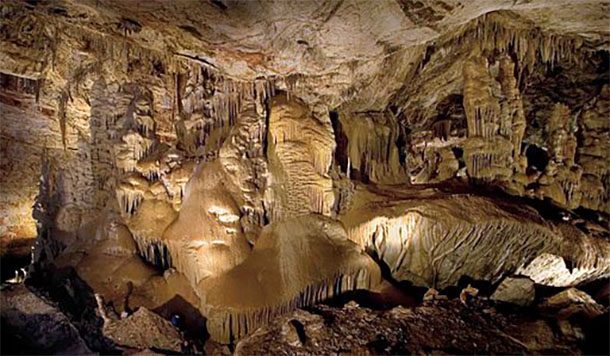
Located in Arizona State Park, this show cave with 2.4 miles of passages was discovered by local cavers in 1974. Long hidden from view, the caves are carved out from limestone and filled with peleothems, which has been growing for more than 50,000 years. Tours of the caves open to the public include the Throne Room, where you can find the world’s longest soda straw stalactites at 6.54 m and the Kublai Khan, a 58-foot high column named after the poem. It also includes the Big Room, which consists of the most extensive formation of brushite moonmilk in the world as it’s a nursery roost for more than 1,000 cave bats. Other caverns that can be accessed by the public include the Cul-de-sac Passage, Mud Flats, Strawberry Room, and the Rotunda Room.
Cango Caves – Western Cape, South Africa
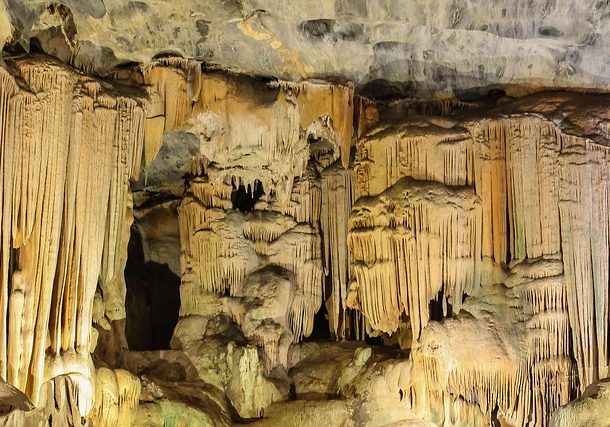
Situated in the Precambrian limestones at the foothills of Swartberg range in the Western Cape, South Africa, it is one of the country’s finest sites for cave exploration and attracts a number of foreign visitors. The caverns are composed of an extensive system of tunnels and chambers that go on for nearly 4 km, though only a quarter of those are open to the public. Some of the tours conducted by guides are the ‘Standard Tour,’ which can take an hour; while an ‘Adventure Tour’ can take an hour and half as you crawl through narrow passages and climb over steep rocks guided only by small flickering lights.
Harrison’s Cave – Allen View, Barbados
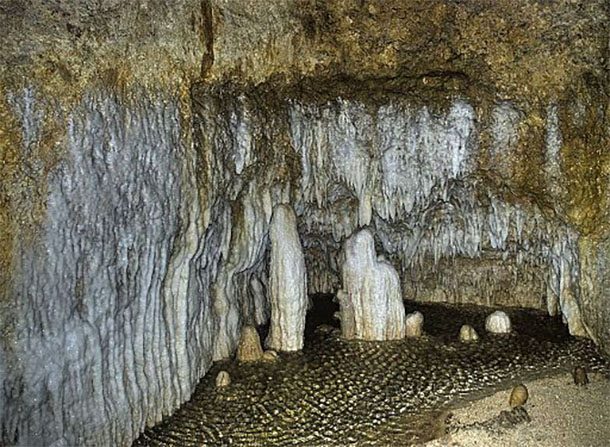
Named after Thomas Harrison, who owned the area in the early 1700’s, Harrison Cave was rediscovered in 1974 by Ole Sorensen, an engineer and cave adventure enthusiast from Denmark. It was later developed by the government of Barbados as a show cave and attraction. The caves, which were opened to the public in 1981, are formed naturally through water erosion via the limestone rock. The guided tour usually starts at “The Great Hall,” a huge cavern 100 ft in height; and is followed by a stop at “The Village,” where formations have joined to form columns after thousands of years.
Carlsbad Caverns – New Mexico, USA
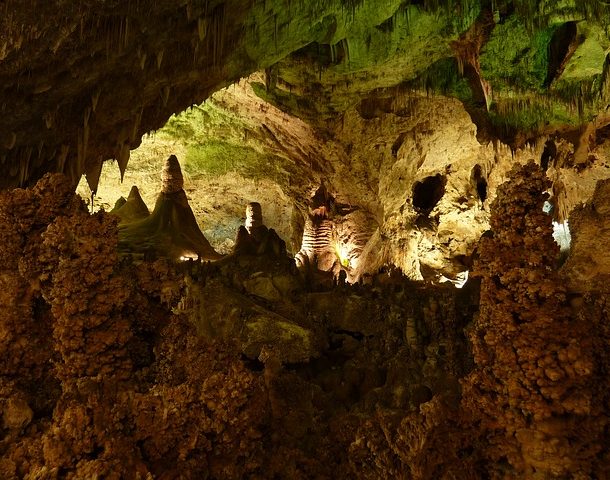
Located in the Guadalupe Mountains of New Mexico, this is a show cave that is open all throughout the year except Christmas. To reach it, you can either hike a steep spiral trail that leads you to the mouth of the cave or take an elevator at the visitor center. It includes a large cave chamber named the ‘Big Room,’ a natural limestone formation that is almost 4,000 ft long, 625 ft wide, and 255 ft at its highest point. This is considered the 3rd largest chamber in North America and the 7th in the world.
Mammoth Cave – Kentucky, USA
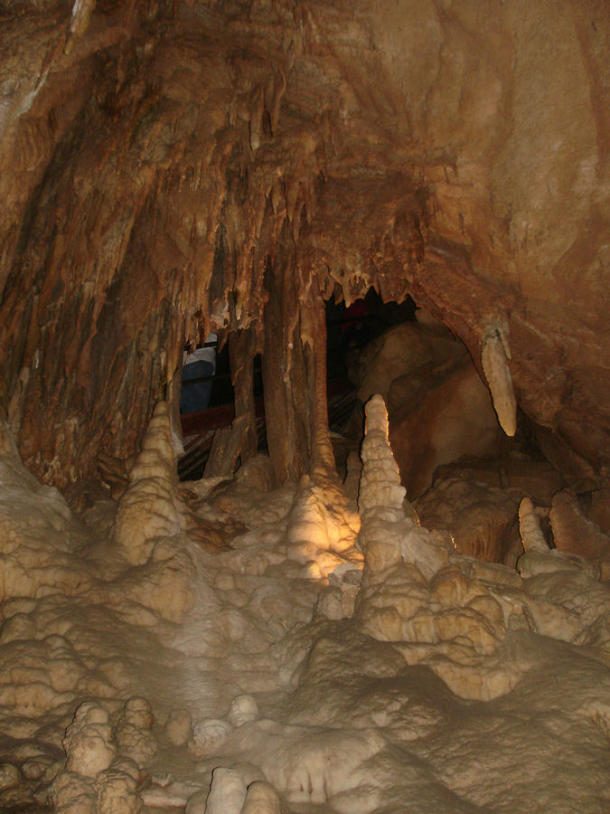
Part of the US National Park in central Kentucky, the Mammoth Cave has the longest cave system in the world called the Mammoth-Flint Ridge Cave System with over 365 miles of subterranean passageways. Established as a national park on July 1, 1941, it also became a UNESCO World Heritage Site (1981) and an International Biosphere Reserve (1990). Other spectacular sights to see include the giant sinkhole aptly named ‘Cedar Sink,’ and the ‘Frozen Niagara.’
Dongzhong Cave – Guizhou, China

Literally meaning “in cave” in Chinese, this is not just an ordinary cave as it actually houses a school! Situated in Ziyun County in the province of Guizhou in China, the enormous cave opened as a school in 1984 with 186 students and 8 teachers. Carved out of the mountain by wind, water, seismic shifts, and other natural forces for thousands of years, it now houses rooms, small buildings, and recreational areas for the students.
Orda Cave – Orda, Perm Krai, Russia
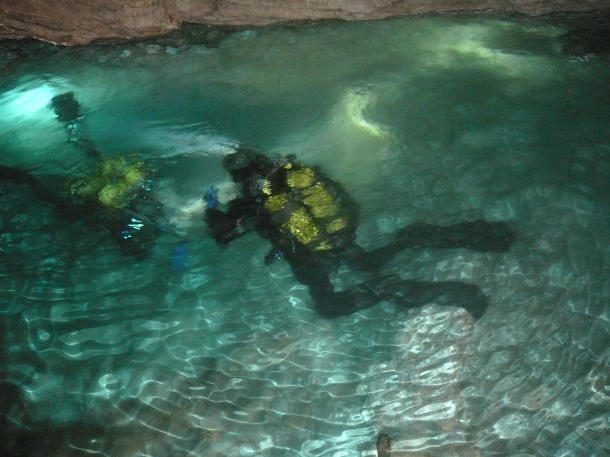 http://ordacave.ru/en/
http://ordacave.ru/en/
In regards to length, this cave is the most extensive underwater cave in Russia and second in Eurasia. It’s also the world’s greatest gypsum cave, and it became a UNESCO World Natural Heritage in 2008.
Phong Nha Cave – Minh Hoa, Vietnam
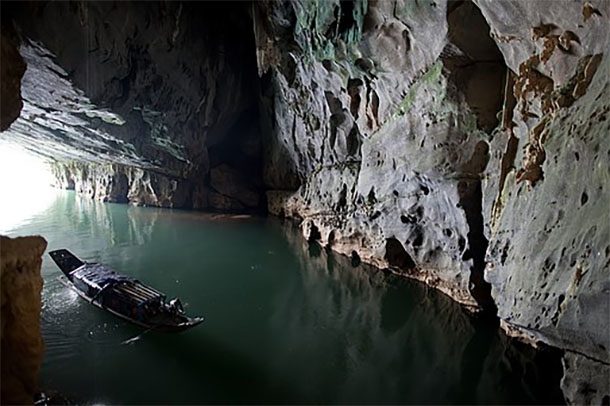
The Phong Nha Cave, which is a part of the UNESCO World Heritage Site in Phong Nha-Ke Bang National Park, is located in the Minh Hoa districts in north-central Vietnam, about 500 km south of Hanoi. The national park was created to protect its over 300 caves and grottoes, aside from the ecosystem and the limestone forest of the Annamite Range. Out of the 300 Phong Nha caves, only 20 of those have been surveyed by scientists. With a total length of 126 km, it held several records including the longest underground river and the largest caverns and passageways before the discovery of Son Doong Cave.
Barton Creek Cave – Cayo, Belize
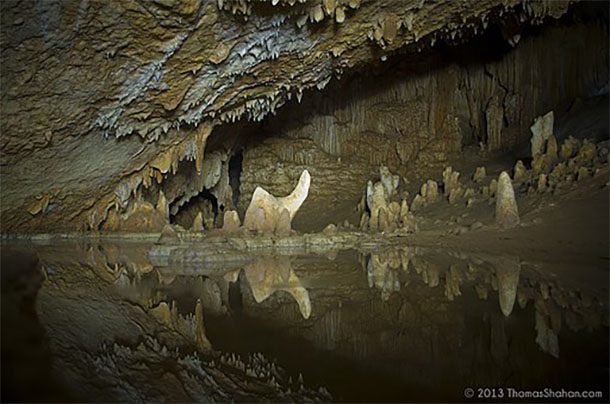
A natural cave in Belize near San Ignacio in the district Cayo, it is not only a popular tourist destination but an archaeological site as well. A single-passageway stream with 6,400 meters of passages, there is an indication that there can be an additional 6 km of passageways as shown by the dry traces at sinking streams. An important archaeological site, there was evidence that the first kilometer of the cave passageway was used by Mayans due to a number of pottery shards that have been discovered dating as far back 200 AD along with the remains of 28 humans.
Škocjan Caves – Trieste, Slovenia
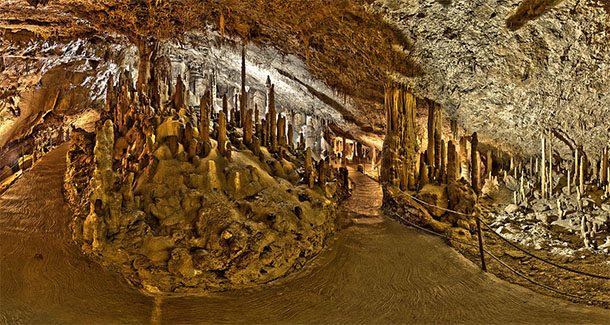
A protected cave system in Slovenia, the cave is just 2 miles long but attracts year-round tourists and visitors. It consists of the Reka River, which goes underground for an additional 21 miles and represents one of the longest ‘karst’ underground wetlands in Europe. It became a UNESCO World Heritage Site in 1986 and was lauded by the scientific community as one of Earth’s natural treasures.
Deer Cave – Borneo, Malaysia
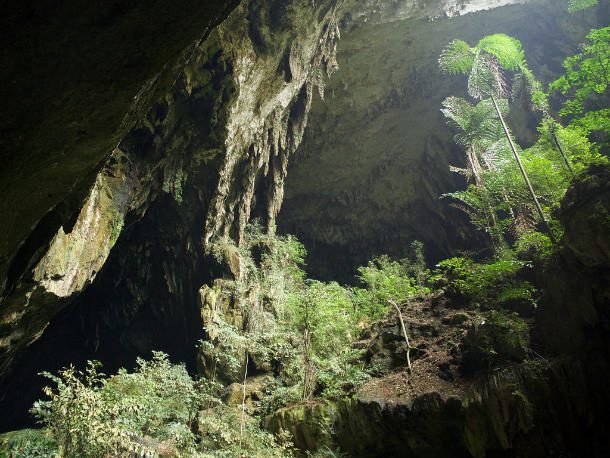
Located near Miri, Sarawak in Malaysian Borneo, it is a cave attraction that is part of the Gunung Mulu National Park. Also known by the locals as ‘Gua Payau’ or ‘Gua Rusa,’ it received its name from the deer that came to lick its salt-bearing rocks and used it as their shelter. First discovered in 1961 by G.E. Wilford, it was further surveyed in 1978 to determine its measurements of 174 m wide and 122m high, while the main entrance measured at 146 m.
Onondaga Cave – Missouri, USA
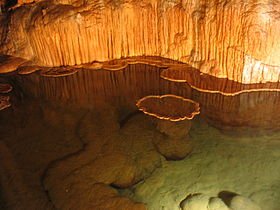
This cave in Leasburg belongs to Missouri National Park, which was established in 1982. Although it was first settled by people in the 1850’s, it has a history of land disputes and vandalism. It is now secured as a protected national park where cave tours, swimming, fishing, picnicking, and hiking are being offered at the visitor’s center, which also has a nature museum. The Onondaga Cave boasts of towering stalagmite, dripping stalactites and other active flowstones.
Puerto Princesa Underground River – Palawan, Philippines

A national park since 1971, the Puerto Princesa Subterranean River National Park is located in Palawan, Philippines. Also known as the St. Paul Underground River, it is a part of the Saint Paul Mountain Range. Aside from the underground river where visitors can explore the cave in a boat, it was also discovered in 2010 that the underground river has a second floor, indicating the presence of small waterfalls inside the cave. It’s composed of a huge 300-m cave dome, unbelievable rock formations, and an underground river.
Majlis al Jinn Cave – Muscat, Oman

This cave is located in the Selma Plateau, 1,380 m above sea level in the Sultanate of Oman. Formed in fossilliferous carbonate rocks, it is the 9th largest cave chamber in the world. A single chamber alone measures about 310 m by 225 m with a free-standing roof about 40 m thick. The cave has a volume of 4,000,000 cubic meters, while its floor area is about 58,000 square meters. Its deepest part is about 178 m below the top of the highest entrance.
Eisriesenwelt Ice Caves – Werfern, Austria
Eisriesenwelt, the German word for “World of the Ice Giants,” is made from natural limestone ice and is located in Werfen, Austria. Found inside the Hochkogel Mountain, a Tennengebirge section of the Alps, it is considered the ‘largest ice cave in the world.’ Extending more than 42 km, it draws about 200,000 tourists each year due to the ice formations of the cave, which were formed by thawing snow that drained into the cave and froze during winter. During the chilly winter, the winds blow into the cave and freeze the snow inside; in summer, the cool wind from inside the cave prevents it from melting.
Fantastic Cave Pit – Georgia, USA
Located in Ellison Caves, east of Lafayette, Georgia, the Fantastic Cave is 586 ft deep. Known as the deepest cave in the United States, it is big enough to hold the Washington Monument.
The Reed Flute Cave – Guangxi, China
A landmark and a tourist attraction outside the city of Gullin in Guangxi, China, its name was derived from the reeds growing inside the cave that are ideal for flute making. It offers magnificent rock and mineral formations, stone pillars, and carbon deposits. Illuminated by different colored lights, it has been one of Gulin’s most interesting tourists’ attractions for the past 1,200 years. Rediscovered in 1940’s by a group of refugees, this 180 years old cave has more than 70 inscriptions written in ink that date as far as 792 AD to the Tang Dynasty.
Blue Grotto – Capri, Italy
A famous sea cave on the coast of the island of Capri in Italy, the sunlight that passes through the underwater cavity and shines through the seawater creates a blue reflection that illuminates the cave.
Ice Cavern – Skattafel, Iceland
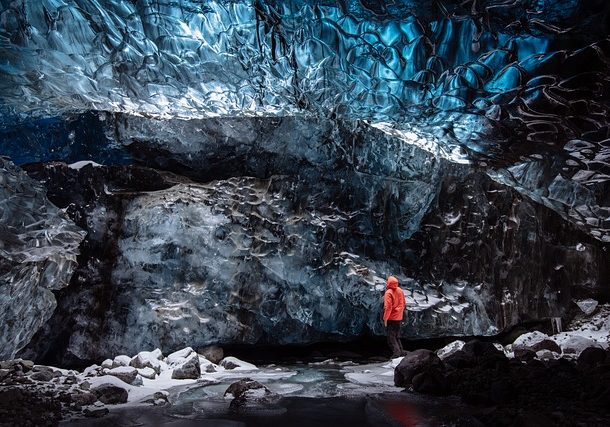
The Kverkfjöll Ice Cave, located in a frozen lagoon in Skattafel, Iceland, is considered one of the most famous glacier caves in the world. Formed by the hot water from a volcanic spring below Vatnajökull glacier, it was discovered during an expedition in the 1980’s.
Lascaux Caves – Motignac, France
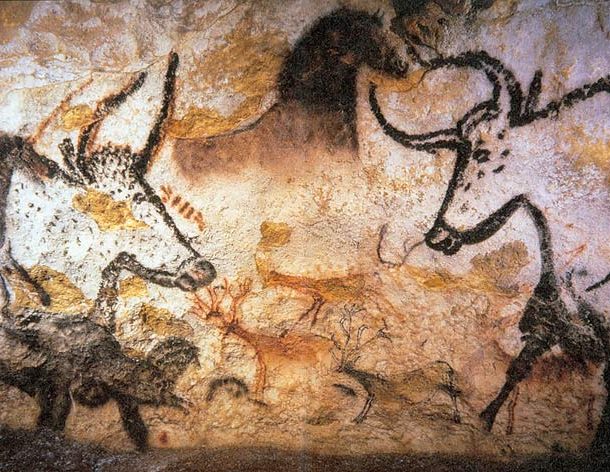
The location of some complex caves in southwestern France, it’s more famous for its Paleolithic cave paintings, which were discovered by a teenager in the 1940’s. The Paleolithic art, which is estimated to be 17,300 years old, consists of images of large animals known to exist in the area due to fossil evidence. Listed as a UNESCO World Heritage Site in 1979, it was opened in 1948 but was closed down to the public until 1963 to preserve the art. The rooms in the cave that you can explore include the Chamber of Felines, the Hall of the Bulls, the Apse, the Nave, the Shaft, and the Passageway.
Cave of Crystals – Chihuahua, Mexico
This was just recently discovered in 2000 when scientists discovered the chasm below after drilling an aquifer and pumping out tens of thousands of gallons of water. A cave that is connected to the Naica Mine in Chihuahua, Mexico, its crystal formations are mind-bogglingly large and measure over 30 feet in height and 4 feet in diameter. Formed due to the water-source that is rich in calcium sulphate, it was heated by an infusion of magma making the cave extremely hot. In fact, people can only endure ten minutes of exposure with proper protection. This is also the reason why most parts of the cave are unexplored.
Glowworm Cave – Waitomo, New Zealand
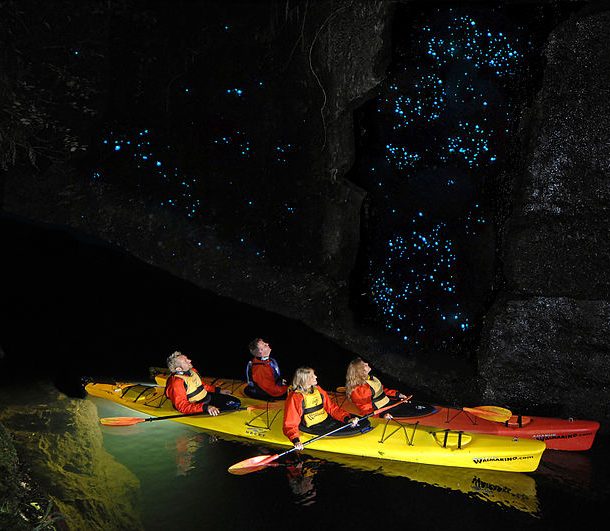
A cave at Waitomo on the north island of New Zealand, it is known for the population of glowworms that are around the size of an average mosquito. It’s part of the Waitomo Cave system along with the Ruakuri Cave and the Aranui Cave. Unique only to New Zealand, this is a must-see for any traveler who can enjoy a boat ride amidst thousands of glowworms illuminating the cave and be a part of over 120 years of cultural and natural history.
Fingal Cave – Staffa, Scotland
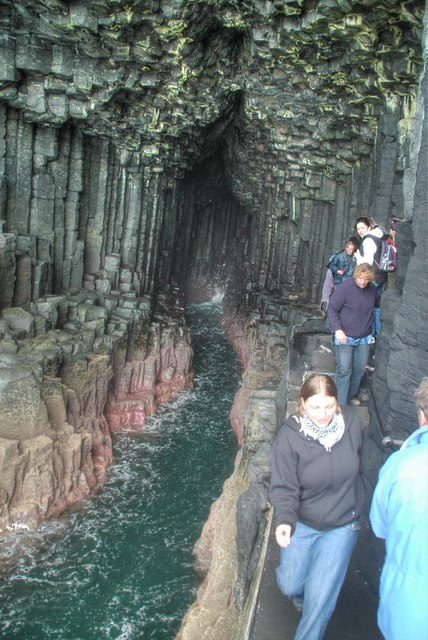
A sea cave on the uninhabited island of Staffa in Scotland, it was formed entirely from hexagonally-jointed basalt columns within a Paleocene lava flow. It is well-known for its naturally arched roof, which produces eerie sounds made by the echoes of the waves to give the atmosphere of a natural cathedral.
Cave of the Swallows – Aquismon, Mexico
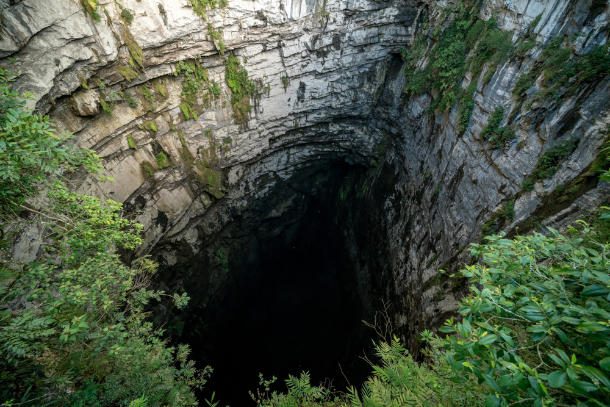
An open airpit cave situated at the Municipality of Aquismon in Mexico, it has a free-fall drop of 333 m from the floor of the cave to the lowest side of the opening, with 370 m drop from the highest side. The 2nd deepest pit in Mexico and the 11th in the world, a skyscraper like the NYC Chrysler Building could easily fit. The cave has low temperatures with thick vegetation at the mouth and rains can cause waterfalls to cascade into its opening. Aside from the layers of debris and guano, you can also find a sinkhole in a fault of the lower Cretaceous limestone, which can go down further to 512 m.
Cave of the Ghost – Canaima National Park, Venezuela
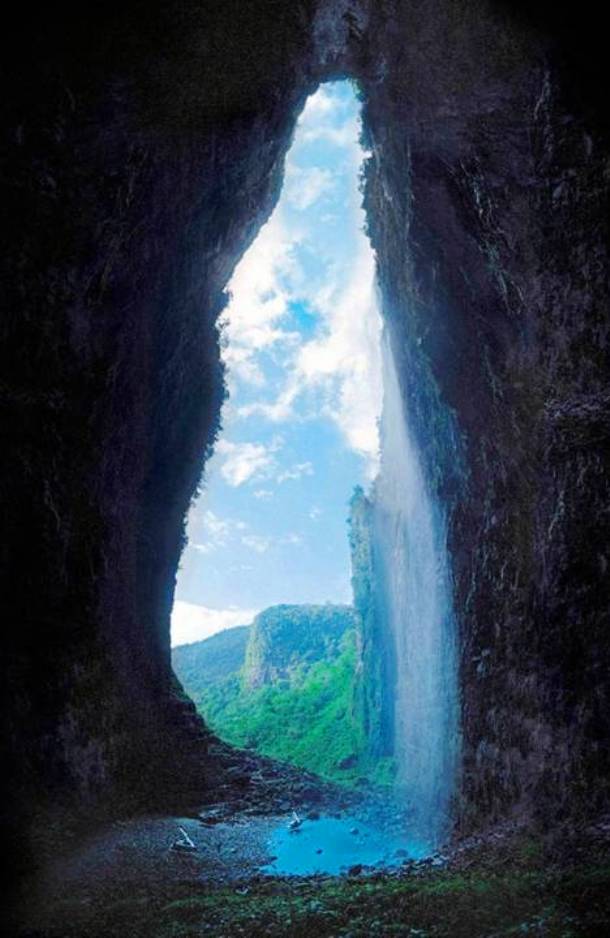
Also known as ‘La Cueva del Fantasma,’ this is an interesting cave located in southern Venezuela. Situated in one of the most biologically rich and geologically ancient parts of the world in the Aprada tepui, it is just barely large enough to contain two helicopters. However, experts believed that this is not actually a cave but a collapsed steep gorge.

